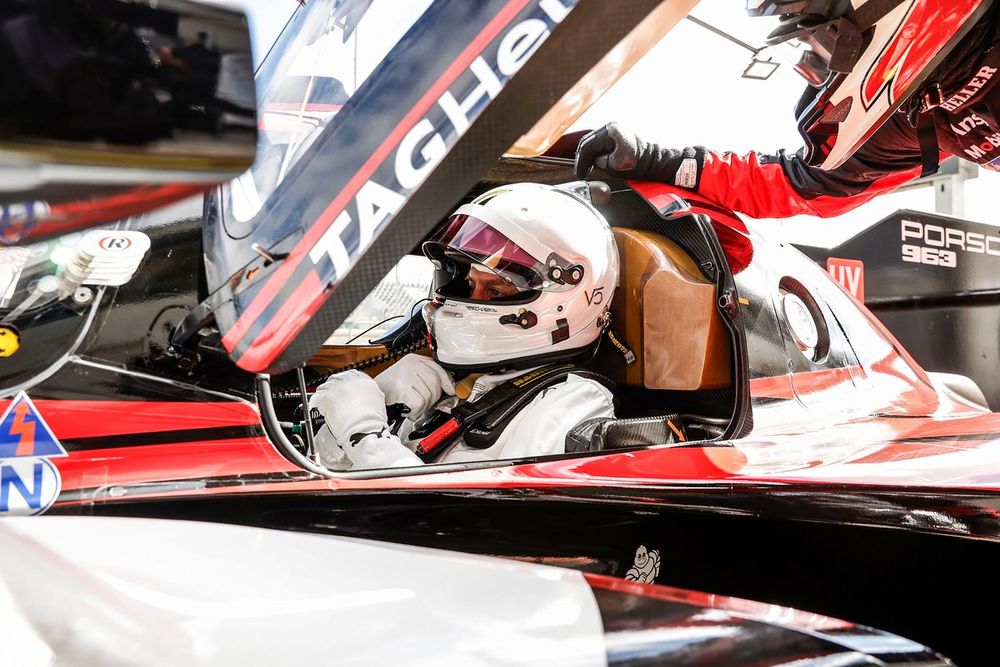Vettel emerged as a late contender to drive Porsche Penske Motorsport’s third 963 LMDh at La Sarthe following a successful test at Aragon in March in which he completed around 600km.
The German manufacturer delayed the announcement regarding its full Le Mans line-up, initially scheduled for the end of March, as it evaluated Vettel for one of the two remaining seats in its three-car factory programme.
But after long deliberation, it passed up the opportunity to sign Vettel, instead retaining Felipe Nasr and Nick Tandy to partner the previously-nominated Mathieu Jaminet in the #4 entry that will be operated by PPM’s IMSA SportsCar Championship squad.
But while Vettel won’t get a chance to make his Le Mans debut in 2024, Porsche is keeping the door open for the 36-year-old to represent the marque in the French endurance classic in the coming years.
«For an OEM like Porsche, for a company like Porsche, it has to remain a topic, that goes without saying,» Porsche LMDh director Urs Kuratle told Motorsport.com’s sister title Motorsport-Total.com.
«And for Sebastian, too. I think he’s up for it — he said so himself after the test.
«That will be a topic, but when and in what form it will come together remains to be seen. Nothing has been finalised at the moment.
Porsche had previously been coy about Vettel’s chances of racing its additional LMDh car for the blue riband round of the World Endurance Championship, only saying that no decision has been made at that point.

Sebastian Vettel, Porsche 963
Photo by: Porsche Motorsport
Asked ahead of this weekend’s Spa round as to why Vettel wasn’t signed by the team, Kuratle said: «The situation did not arise. There is no culprit in this question. I think that’s actually the case, it didn’t happen. That didn’t happen.»
During the LMP1 era of the WEC, Porsche signed another German driver Nico Hulkenberg for its third car at Le Mans while he was still active in F1 with Force India.
Hulkenberg went on to take a memorable win for Porsche in 2016 in the 919 Hybrid he shared with Tandy and Earl Bamber, the first for the Stuttgart-based marque since its return to the WEC the previous year and 17th overall.
However, modern-day LMDh cars that compete in the Hypercar class are much slower than their LMP1 predecessors, whose performance was not very far from the grand prix cars of that time.
Kuratle explained that it’s much harder for F1 drivers to adapt to the WEC in 2024 than it was about a decade ago, with LMDh and LMH cars of today weighing over 1000kg.
«The biggest difference at the moment is probably the weight,» he said.»
«The cars are both very complex, they are just different in terms of design. I think the biggest difference, you keep hearing, is that.
«One big difference is that the pure vehicle weight is another one. A huge difference is also that we drive at night, that we have different big speed differences from all classes that you encounter on the track.
«That’s probably the case. Those are the biggest differences.
«I just don’t think it was the whole thing before. That means he [Vettel] needs some [more] time to get used to it in [than in] the past.»








